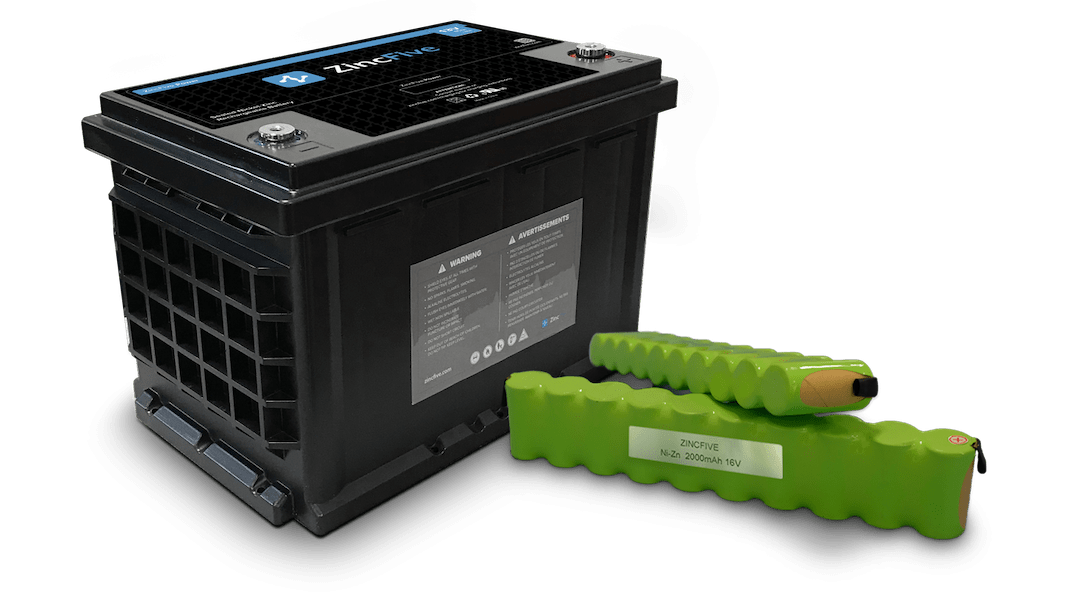With a combination of their inherent sustainability and growing investor interest, rechargeable zinc batteries are poised to play a major role in energy storage. Josef Daniel-Ivad, Ph.D., Manager of Zinc Battery Initiative (ZBI), writes about the potential of this fast-developing technology, and how energy storage innovators have partnered with ZBI to promote the many advantages of safe, sustainable zinc batteries.
As battery developers continue to enhance their products, both through continued engineering and chemical additives, rechargeable zinc batteries are competing well in the energy storage space. Most ZBI members are zinc battery developers, but rather than creating a battery, engineers of the newest ZBI member - Octet Scientific Inc., have designed electrolyte additives that improve the performance of all zinc batteries, no matter what their chemistry.
Cleveland-based Octet Scientific began developing its first electrolyte additive in 2017. While its original novel small molecule additives (OctoLyte Z1-5) were created for rechargeable alkaline-based zinc batteries to stop dendrites and prevent hydrogen on charge without sacrificing efficiency; a new additive (OctoLyte Z6) is geared for acidic- to near-neutral zinc halide batteries and controls plating, improves cyclability and gets more energy out the battery. A third highly soluble and simple class of additive (OctoLyte Z7) is designed for all alkaline zinc batteries to hinder corrosion and hydrogen formation as well as improve overall battery performance and lifetime. With its broad and growing line of products, Octet's chemistry is scalable and customizable to work with any zinc battery chemistry.
While OctoLyte optimizes battery function, zinc batteries already compete effectively in providing stationary storage, powering data centers and delivering e-mobility to the defense department. Well-established companies, such as Australian-based Redflow, have developed safe, scalable and sustainable batteries ideally suited to time-shifting energy on a daily, full-cycle basis, as well as providing emergency power supplies in a wide range of climates.
The zinc-bromine flow batteries can meet residential, commercial, or industrial energy storage needs as well as deliver emergency backup power for sites ranging from shopping centers, data centers and factories to telecommunication towers, rural pumping stations and mines. In an era when sustainability reigns supreme, Redflow's batteries are recyclable, emit no CO2 and contain minerals sourced from conflict-free regions.
ZBI members Redflow and Oregon-based ZincFive, are successfully installing their batteries at various sites globally, while other zinc battery developers are progressing through the earlier stages of development. Canada-based Zinc8, for example, is working on several large demonstration projects for its zinc-air battery and is entering the manufacturing phase after announcing plans to build its first factory in New York. The zinc-air batteries are designed for both commercial and residential applications.
Another zinc battery developer benefitting from the growth in the residential energy storage market is Canada-based Salient Energy. Salient recently partnered with sustainable builder Horton World Systems to provide its zinc-ion batteries for residential energy storage in as many as 200,000 homes. Salient's zinc is sourced from North American mines, its batteries are non-flammable, and it emits 66 percent fewer greenhouse gases than lithium-ion batteries during the manufacturing process.
Residential storage is quickly becoming one of the top markets for zinc batteries, which last longer and pose no fire risks. The superior safety of zinc batteries makes them ideal for widespread residential home energy storage applications.
RELATED: UEP: Bringing the rechargeable Zinc Alkaline Battery to market
Providing back-up power to data centers is another area where zinc batteries are hitting their stride. New York-based Urban Electric Power recently partnered with the San Diego Supercomputer Center to replace 1,000 kWh of lead-acid batteries with its sustainable and long-lasting zinc-manganese battery technology. Similarly, ZincFive recently announced its new nickel-zinc battery design ideal for providing backup power to missions-critical data centers, where non-flammable, sustainable energy storage technology with a low-carbon footprint is critical.
In the US, zinc battery developers have found a unique niche: providing safe energy storage alternatives for defense e-mobility, including submarines and fighter jets, where fires caused by thermal runaway of lithium-ion batteries would be catastrophic. Missouri-based ZAF Energy Systems and AESIR Technologies have developed nickel-zinc batteries for use in defense as well as for data centers, trucking and aerospace markets. While zinc batteries currently are well-suited for defense e-mobility, they are expected to enter other e-mobility markets over the next few years, including scooters and cars. Enzinc, which has developed a 3D micro-sponge zinc electrode, is targeting to provide batteries that achieve energy densities similar to LFP batteries on a cell level and Li-NMC batteries on a systems level.
Zinc-based batteries' superior fire safety and secure supply chain make them very attractive to be further developed to also serve the e-mobility market. This can be accelerated through appropriate funding initiatives that are government supported to de-risk the investment.
Zinc batteries are earning both attention and financial support through a combination of public and private funding. While Swedish-based Enerpoly got a jumpstart from the European Union to supply home energy storage devices, the zinc-ion battery developer received almost twice the seed money, to the tune of $1.5 million, from private Swedish investors. German-based developer HILABS, which has developed a scalable, safe, and affordable zinc-air battery designed as an alternative to lead acid and lithium-ion batteries in a variety of applications, has received funding through a first prize award of the foundation of Energie & Klimaschutz. In the United States, the promise of incentives from the 2022 Inflation Reduction Act motivated Zinc8 to begin building its first manufacturing facility in New York. Coupled with the $72 million in private funding it has raised since its inception, Zinc8 is poised to begin producing its batteries for stationary storage.
RELATED: Zinc-ion battery developer Enerpoly raises $ 1.5 million seed funding
In recent years, several zinc battery developers have raised substantial amounts from private investors. Canadian-based e-Zinc, raised $25 million in Series A financing, to begin pilot production of its first zinc-air flow commercial energy storage systems. In addition, ZincFive's nickel-zinc battery has generated $54 million in Series D fundraising, bringing the total investment to $139 million. ZincFive is targeting a variety of markets, including data centers, transport, defense, and industrial stationary applications.
Another promising aspect of zinc batteries beyond investor interest and performance, is their sustainability. The zinc industry is focused on this topic, reducing its carbon footprint, and increasing efforts to recycle. ZBI was formed by the International Zinc Association - the voice of the zinc industry - in 2020, to promote rechargeable zinc batteries. IZA has developed a sustainability charter and guiding principles that aligns with the United Nations 2030 Agenda for Sustainable Development. It has also created Zinc Carbon Footprint Guidance to help determine and follow best practices in both mining and production.
Most promising – the zinc industry has increased its recycling rate to 34 percent, or about seven million tons per year, a percentage that is expected to increase annually. Further, Zinc producers worldwide are now able to participate in the newly launched Zinc Mark to meet increasing demands for certified proof of responsible production. The Zinc Mark uses the ESG standards and assurance framework of the Copper Mark organization, thereby building on existing standards in the market.
Zinc's sustainability, performance and ongoing interest from investors position these innovative batteries to compete effectively in the energy storage market. New products that enhance battery performance serve to bolster that competitive edge, a promise that poises zinc batteries to play a central role in meeting the world's growing energy storage demands for centuries to come.
(The views expressed in this article are those of the writer.)
RELATED: Zinc Batteries: Rightly positioned to assist Energy Storage industry on sustainable goals
Read More



